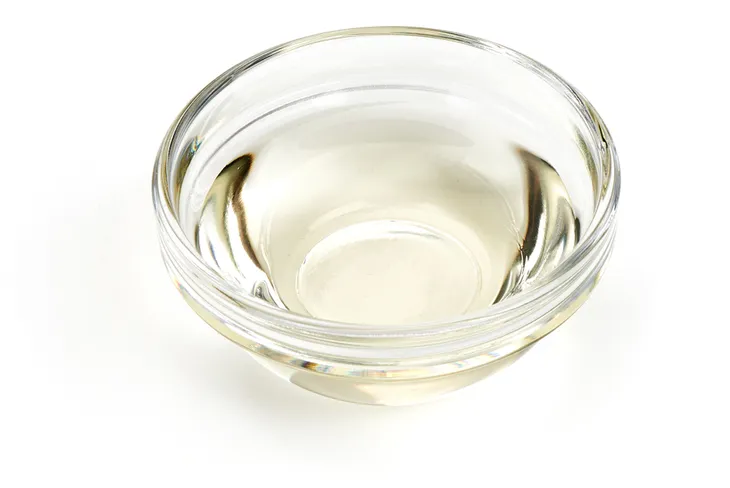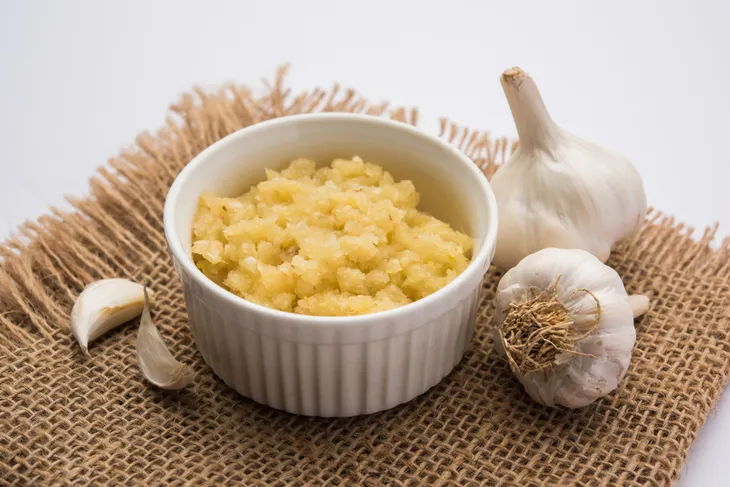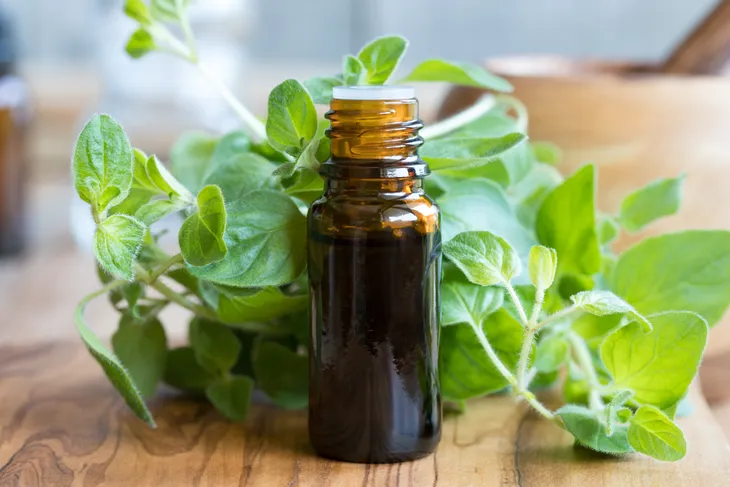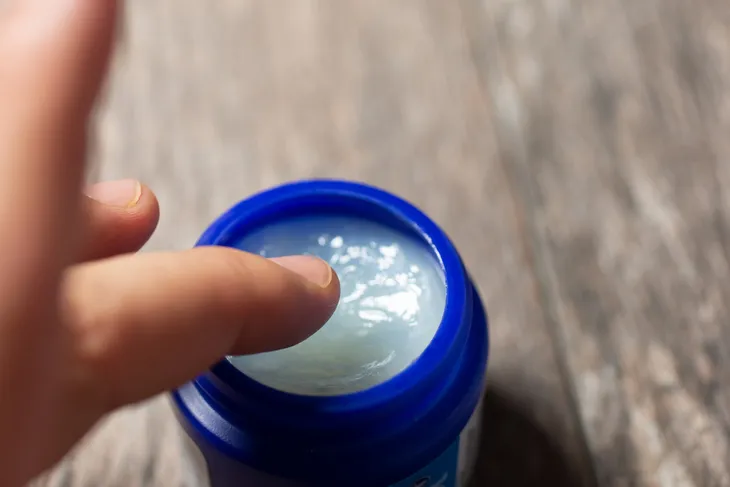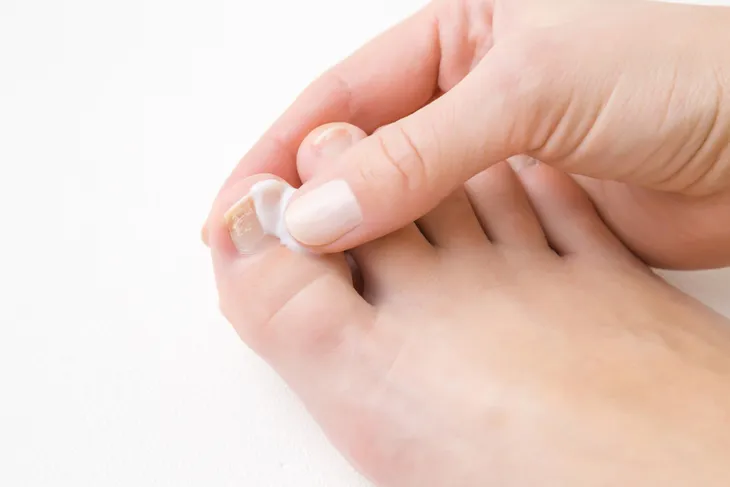Toenail fungus also referred to as onychomycosis, is a common (although annoying) fungal infection of the toenail. Common symptoms include white, yellow, or brown discoloration of one or more toenails. It can even cause your nails to thicken or crack!
This fungus is also contagious which means it may start on one toenail but can quickly spread to others. This is why getting it under control is crucial. Thankfully there are a variety of over-the-counter antifungal medications and home remedies you can try. Let’s take a closer look at effective home remedies for toenail fungus as well as when to seek medical treatment.
Tea Tree Oil
The first home remedy you can try is tea tree oil, also known as melaleuca. It’s an essential oil that is known to have antiseptic and antifungal properties.
A few clinical studies have shown that tea tree oil may be effective in curing toenail fungus. To use this remedy, you’ll want to apply tea tree oil directly onto the affected nail using a cotton swab. Apply the oil twice a day for optimal benefits. If the oil causes irritation, discontinue use.
Vinegar
Vinegar can be used for many things like cleaning your house, reducing stubborn odors, and it can even be used as a home remedy for toenail fungus. It’s important to point out, there isn’t much evidence that proves this treatment will work, however, it’s an inexpensive and relatively safe remedy worth trying.
To try this remedy start by mixing one part vinegar with two parts warm water. Then soak the affected foot in the mixture for up to 20 minutes per day.
Garlic
Garlic is a delicious ingredient that can add tons of flavor to many dishes but did you know it has medicinal properties too? Garlic has some antimicrobial and antifungal abilities and may help treat toenail fungus.
To use garlic as a remedy for toenail fungus start by chopping or crushing garlic cloves. Then apply the garlic to the affected area for up to 30-minutes per day. Use this remedy with caution because raw garlic can irritate the skin.
If you want to skip the raw garlic treatment, you could try taking garlic capsules instead. Just be sure to read the manufacturer’s instructions.
Oregano Oil
Oregano oil has many benefits. It’s a powerful antioxidant, may help improve gut health, has anti-inflammatory properties and it may help treat toenail fungus. This is because it contains thymol which is known to have antifungal and antibacterial properties.
To use oregano oil as a treatment, you’ll want to apply the oil to the affected nail twice a day. Use a cotton swab and brush the oil on your nail. Just like tea tree oil, if the oregano oil causes irritation, discontinue use.
Baking Soda
Baking soda is commonly used in baking but it can also be used as a household cleaner too. It may even help treat your toenail fungus. This is because it can help soak up moisture that may be causing the toenail fungus in the first place.
In a small study, researchers found that baking soda was 79-percent effective in helping prevent fungal growth. Even though it didn’t get rid of the fungus, they saw it reduce fungal growth in 17-percent of the specimens tested.
To use baking soda as a preventive, try putting it inside your socks and shoes. This will allow the baking soda to soak up moisture. You could also try applying a mixture of baking soda and water directly to the affected nail. Allow it to soak for up to 10-minutes and then rinse.
Mouthwash
There isn’t any concrete scientific evidence that proves mouthwash will cure toenail fungus. That said, some studies say certain types of mouthwash have antifungal properties. Look for a mouthwash that contains ingredients like menthol, thymol, and eucalyptus.
Since mouthwash is a budget-friendly product, it’s certainly worth a try. To use it as a remedy for toenail fungus fill a small bowl with mouthwash. Then soak the affected area for up to 30-minutes per day.
Mentholated Topical Ointment
Mentholated topical ointments are often used to help treat the symptoms of cough and colds. These types of ointments often contain ingredients like menthol, camphor, and eucalyptus oil which may help treat toenail fungus.
It’s worth noting, there is more research needed to help prove the effective use of mentholated ointment for toenail fungus. Since it’s a relatively cheap treatment option, it’s worth a try. To use the ointment, simply apply it directly to the affected nail one to two times per day.
Snakeroot Extract
Snakeroot extract, also known as Ageratina, comes from the sunflower family. It isn’t a well-known remedy in the U.S. but Medical News Today notes it’s a traditional treatment for fungal infections in Mexico.
One study showed certain compounds in snakeroot were effective against strains of fungus that cause athlete’s foot. If you’d like to try snakeroot extract, you can buy it online or in some specialty stores.
To use it, you’ll apply the extract to the affected toenail two to three times per week.
Essential Oils
A study suggests that certain blends of essential oils may have antifungal and antimicrobial effects which may help toenail fungus. These blends include lavender oil, ylang-ylang oil, jasmine oil, petitgrain oil, and clary sage oil.
You can buy the oils online or from specialty stores. Be sure to mix the oil with a carrier oil before applying it to your affected nail.
Over The Counter Remedies
There are several over-the-counter (OTC) remedies worth trying too. This includes undecylenic acid, tolnaftate, and terbinafine. First, undecylenic acid is the main ingredient in many OTC anti-fungal products. It can be found as a liquid or polish that you paint onto the affected nail. This product can help ease irritated skin caused by the fungus.
Next, is tolnaftate, which is a common ingredient in OTC products that treat athlete’s foot and ringworm. It’s available in a cream, powder, liquid, or spray and offers relief within two to three days.
Finally, terbinafine is available in a powder, cream, spray, or gel. You can also speak with your doctor to get a prescription for the pill form. It’s effective in treating toenail fungus but it may take a couple of months before you see the full results.
When to See a Doctor
The good news is that toenail fungus is usually a cosmetic issue. That said, it can cause complications for some individuals.
For example, toenail fungus can be a problem for people with diabetes. This is because the fungus can lead to foot ulcers as well as other foot problems. Healthline explains that chronic toenail fungus may even lead to bacterial cellulitis of the leg which can be a serious risk factor.
So when should you see a doctor for toenail fungus? If you have diabetes or a weakened immune system, skip the home remedies and talk to your doctor right away! They’ll be able to determine the best treatment plan for you.


